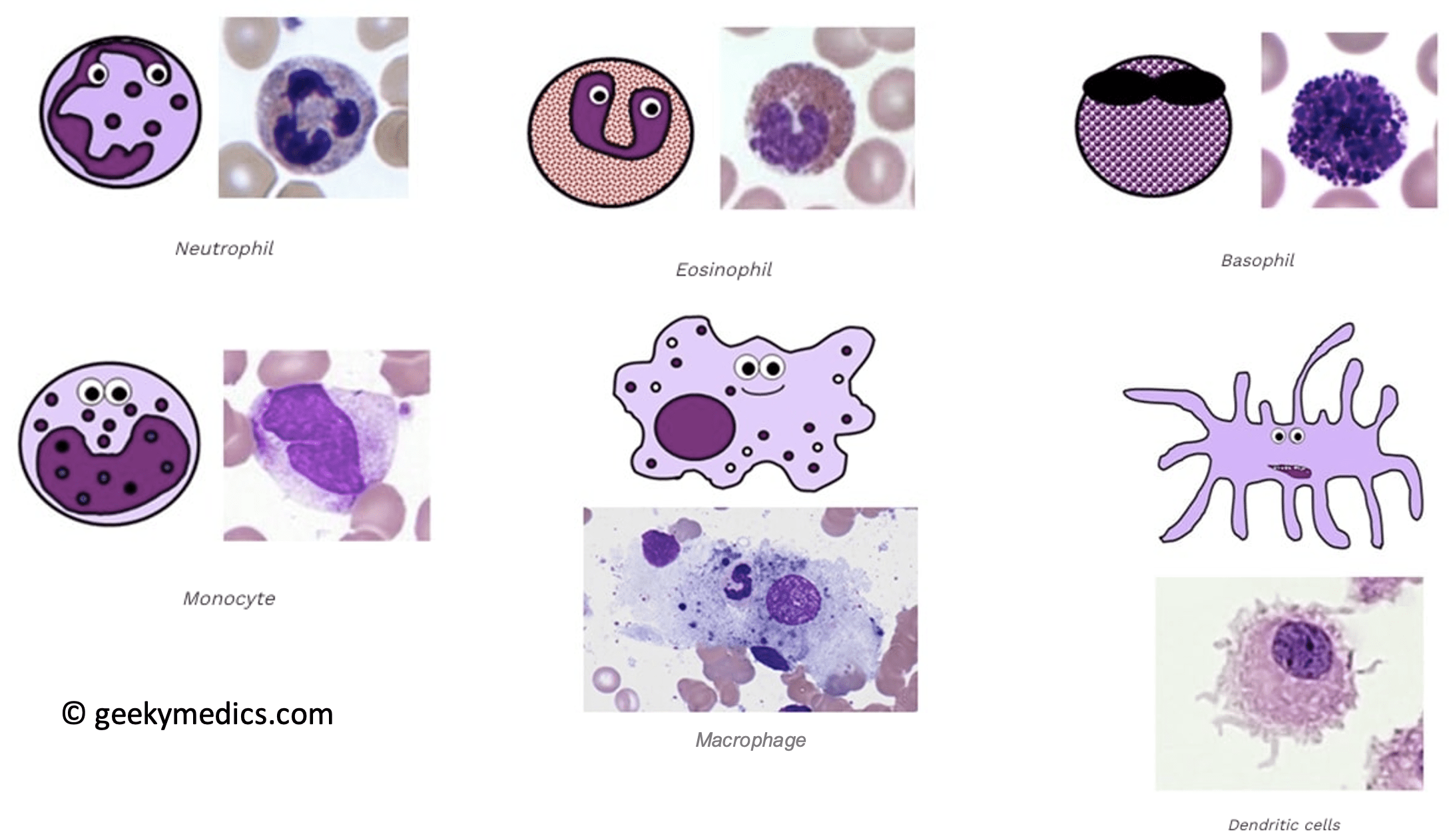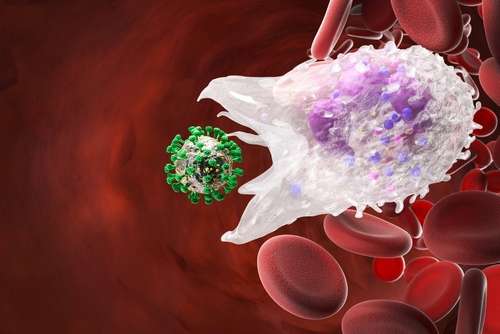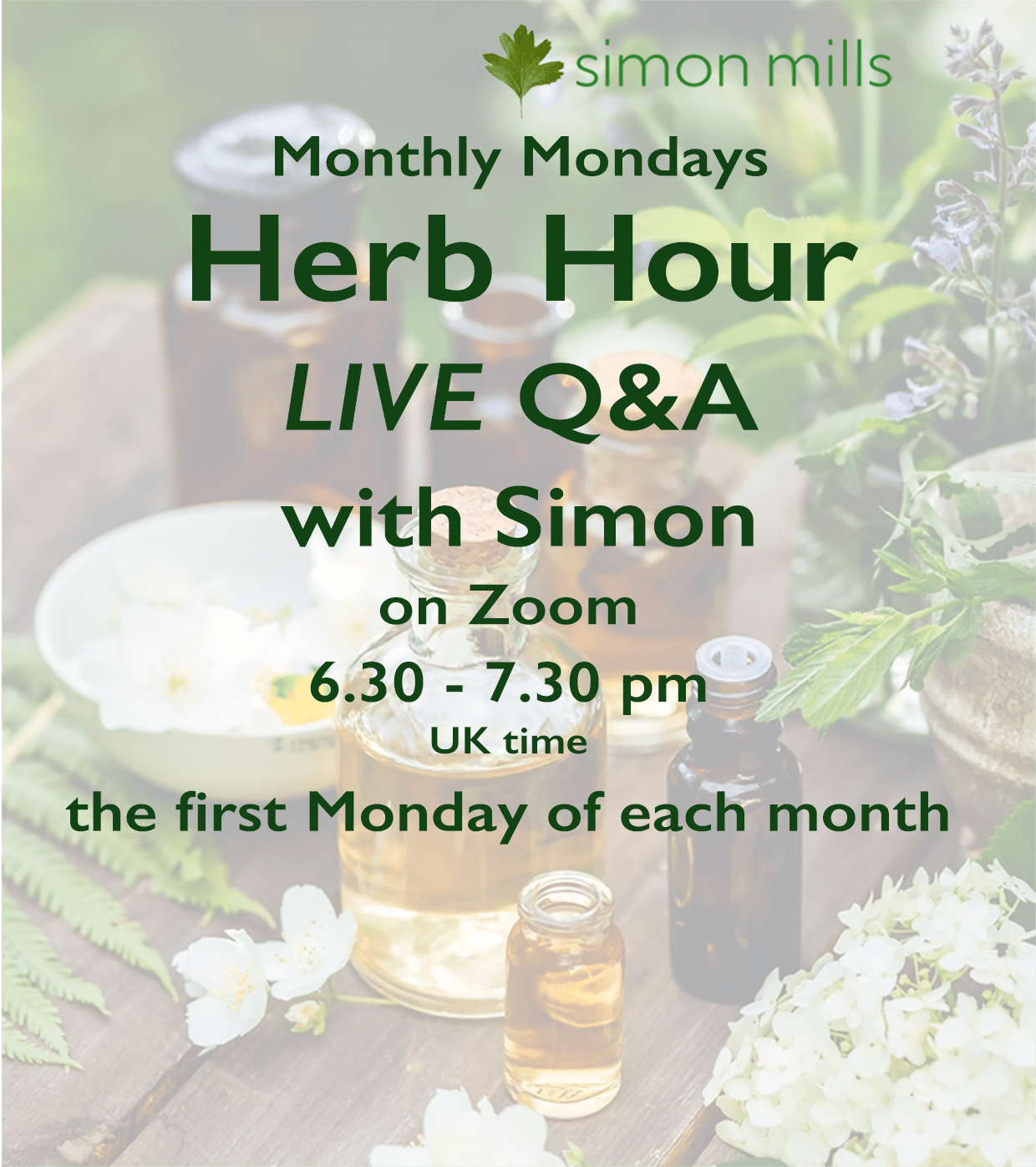Our first responders form the ‘innate’ immune system. These white blood cells work quickly and may not need to involve complex immune responses. They are also most easily helped by plant remedies.
The innate immune system is the most direct part of our cellular immune system. It is in some ways the most primitive, being the only immune system in invertebrate creatures.
It is formed of types of white blood cells – outlined below – which get straight to work to deal with threats. These are the squaddies or PacMen of the immune system, the ones that do most of the hard work in protecting us from infections, and clearing up dangerous debris, so combining the role of militia and janitors. They congregate where there is local trouble. They may form ‘swollen glands’ or inflammatory swelling if in a big battle. If they are fighting a severe bacterial infection they can generate pus from dead bacteria. They hang out in lymphatic tissues, lymph glands, special glands like tonsils and appendix. As we will see in other posts their battles are straightforward, without too many complications. They respond to several herbal remedies, especially locally in the throat and on mucosal and other surfaces.
We love the innate immune system! These cells are tough, quick and ruthless and they respond well to the right support. We want them fighting for us, not against us, and fortunately that is their default role.
The innate immune system is made up mainly of a range of white blood cells (leucocytes) known collectively as phagocytes (from Greek: ‘cells that eat’). There are two types: granulocytes and monocytes.

Granulocytes gobble up and breakdown particles that should not be there, including debris, foreign matter, viruses and even bacteria, digesting them inside special compartments called vesicles (which make up the granulation seen in the microscope. Neutrophils are by far the most numerous and are first on the frontline doing most of the heavy lifting. These are the cells we work with the most. Eosinophils and basophils (‘mast cells’) are more specialised granulocytes important for defence against parasites and are also involved in allergic reactions – basophils release histamine and other powerful inflammatory agents when provoked.

A stylised image of a neutrophil engulfing a virus in the bloodstream
Monocytes also patrol the circulation. When activated by dangers they develop into larger macrophages (‘big eater’ in Greek), which are able to move through the small blood vessel wall into the tissues to ingest and breakdown bacteria, recycle dead cells, and clear away debris. Dendritic cells also develop from monocytes: they are an important ‘antigen-presenting cell’ responsible for processing large foreign molecules into ‘readable’ fragments (antigens) – see below.
Pattern Recognition Receptors (PRRs) such as Toll-like receptors (TLRs), that the phagocytes use to detect stretches of foreign protein fragments: DAMPs and PAMPs (Damage-Associated … and Pathogen-Associated Molecular Patterns).
PRRs then activate the production of antimicrobial substances and inflammatory cytokines, and notably the ‘complement system’ a cascade of proteins that enhance both innate and other immune defences. Their production of inflammatory agents means that the innate system can hurt! It also is more associated with swellings, eruptions, and even fevers (see also article 4 in this series).
There is another part of the innate immune system whose cells are of the same type as those in the adaptive immune system (see next Article). Natural killer (NK) cells are lymphocytes that are adept at recognising and killing virus-infected or tumour cells with safe destructive methods. They hold off attacking self cells by recognising ‘major histocompatibility complex (MHC) class 1’ markers on their surface. Like their lymphocte relatives in the adaptive immune system NK cells can also be retained as memory cells.
For a deep dive into the inate immune system check out the following review paper.



Recent Comments